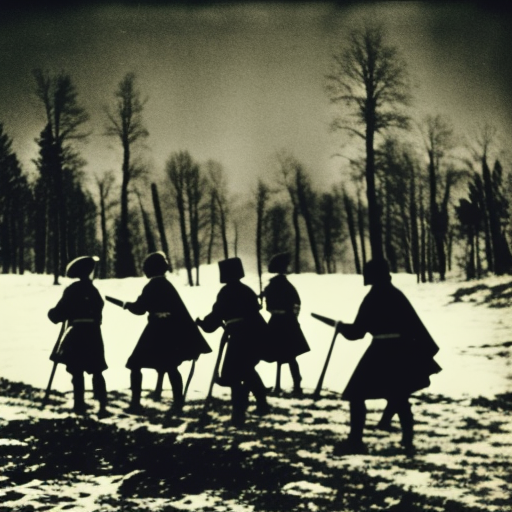The Partitions of Poland (1772, 1793, 1795)
The Partitions of Poland refer to the division and annexation of the Polish-Lithuanian Commonwealth by neighboring powers in the late 18th century. These partitions, which took place in 1772, 1793, and 1795, resulted in the complete disappearance of an independent Polish state from the map for over a century. The partitions were driven by the ambitions of Russia, Prussia, and Austria, who sought to expand their territories at the expense of a weakened Poland.
First Partition (1772)
The First Partition of Poland occurred in 1772 and was initiated by Russia, Prussia, and Austria. The three powers took advantage of internal political and economic instability in Poland to justify their intervention. As a result of the partition, Poland lost approximately 30% of its territory, including important cities such as Lviv and Krakow. The partition also weakened the Polish government and sparked widespread discontent among the Polish population.
Second Partition (1793)
The Second Partition of Poland took place in 1793 and was primarily orchestrated by Russia and Prussia. Once again, the pretext for the partition was the internal turmoil within Poland. This time, the partitioning powers seized about 30% of the remaining Polish territory, further diminishing the size and influence of the Polish-Lithuanian Commonwealth. The Polish government, already weakened by the First Partition, was unable to resist the encroachment of its neighbors.
Third Partition (1795)
The Third Partition of Poland, which occurred in 1795, was the final blow to the Polish state. Russia, Prussia, and Austria once again participated in the partition, dividing the remaining Polish territory among themselves. This partition effectively erased Poland from the map, as the country ceased to exist as an independent state. The Polish government was dissolved, and its territories were absorbed into the empires of the partitioning powers.
Consequences
The partitions of Poland had far-reaching consequences for both Poland and Europe as a whole. The loss of independence and territorial integrity deeply affected the Polish people, who faced political oppression and cultural assimilation under foreign rule. Polish nationalism and a desire for independence grew in response to the partitions, eventually leading to uprisings and attempts to regain independence in the 19th century.
The partitions also had significant geopolitical implications. The balance of power in Europe was disrupted as Russia, Prussia, and Austria expanded their territories and influence. The partitions highlighted the vulnerability of smaller states and the aggressive nature of larger powers. The events in Poland served as a warning to other countries about the dangers of internal divisions and external interference.
The partitions of Poland also had an impact on the broader European political landscape. The disappearance of Poland as an independent state weakened the concept of a multiethnic, multi-religious state and contributed to the rise of nationalism in the 19th century. The partitions also highlighted the need for a new system of international relations, which eventually led to the Congress of Vienna in 1814-1815, where the European powers sought to establish a balance of power and stability.
In conclusion, the partitions of Poland in 1772, 1793, and 1795 marked a significant chapter in European history. The division and annexation of the Polish-Lithuanian Commonwealth by Russia, Prussia, and Austria resulted in the disappearance of an independent Polish state for over a century. The partitions had profound consequences for Poland, Europe, and the development of nationalism in the 19th century.












